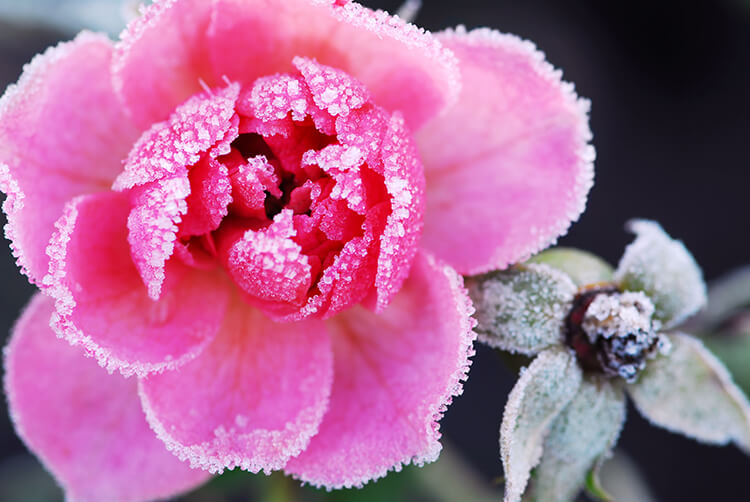
Will My Plants Survive the Winter?
Understanding Hardiness Zones
This time of year can cause trepidation in novice and non-gardeners. Will that beautiful flowering potted plant make it through the winter? Will that cute ornamental tree that I planted in the back flowerbed see next spring?
Well, there’s a resource that farmers, landscapers and green thumbs know of which outlines what plants will survive in different regions. The Hardiness Zone Map (below) is a colour-coded and alphanumerically-labelled infographic that represents growing zones and their respective average temperatures.
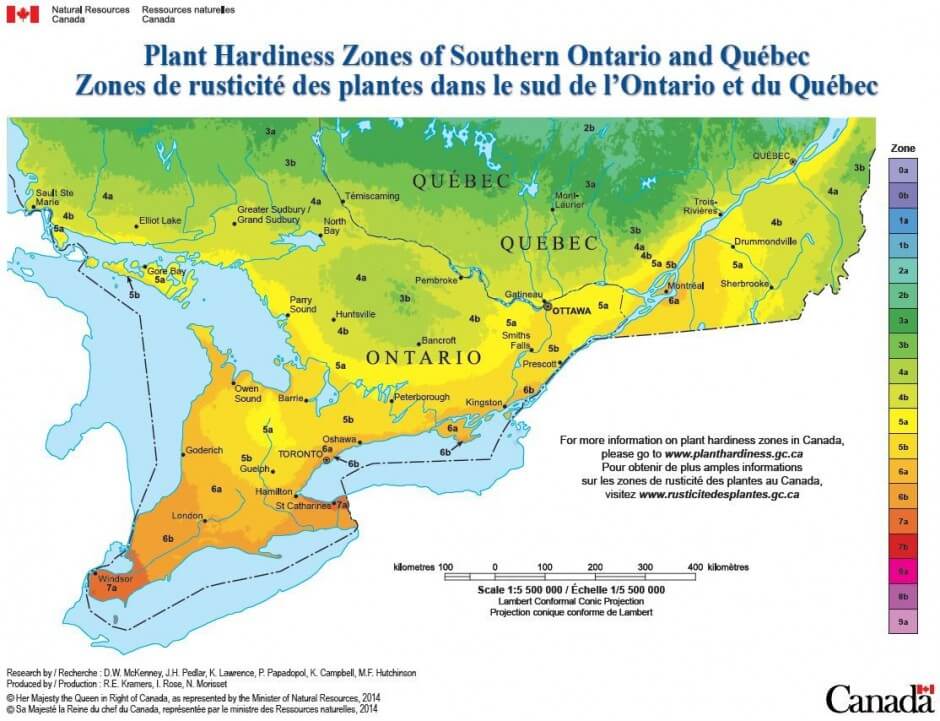
Originally created in the 1960s by Agriculture Canada, today’s hardiness zone maps are updated in Canada by the Ministry of Natural Resources (MNR). And while the current map will serve you well when choosing and protecting your plants, it is subject to change and does have a few limitations.
Not surprisingly, climate change has a direct impact on hardiness zones. The maps below demonstrate a shift from the early 1960s (first map) to about 2010 (second map). This was one of the subtlest shifts in Canada. Western provinces saw a more marked change. Out there, the shift was a two-zone transition, and warmer zones were introduced that hadn’t before been seen in Canada.
Each numbered zone represents 10 degrees of difference in average annual temperature. Zones are further split into A and B, representing the lower and higher five degrees of the zone, respectively. Stratford, Ontario (see location indicator on map) used to be just inside Zone 5A, but is now in Zone 6A.
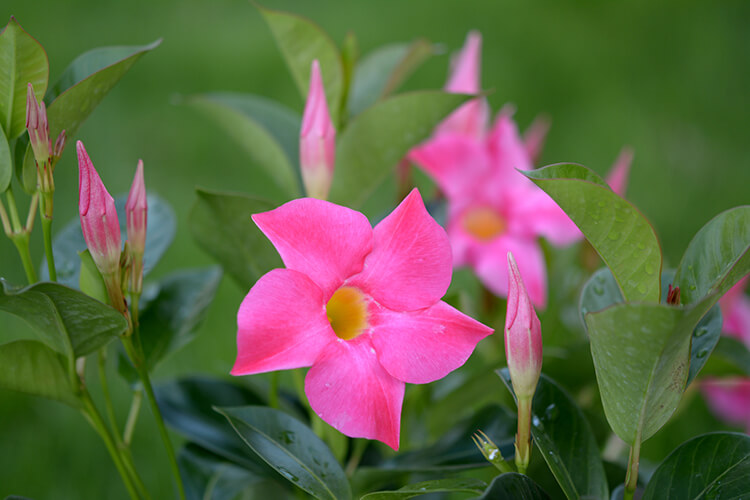
Mandevilla (Dipladenia)
So, what does that mean for the Mandevilla (for example) that you bought in the spring and have been enjoying all summer long? A Mandevilla is a tropical plant and is only winter-hardy down to Zone 9. That’s an average annual temperature of roughly 30 degrees warmer than we experience here in Southwestern Ontario. So, if you want it to survive the winter, it has to be brought indoors.
Of course, the alternative is to treat a plant like this as an annual and just let it die off in the fall. However, many plants that aren’t winter-hardy in our zone will come back year after year if you properly acclimate them and have the space to overwinter them indoors. For the most part, they go dormant in the winter – a kind of hibernation – so require minimal attention.
If you’d prefer not to fuss with overwintering, and just want plants that can handle our winters, just do a little bit of reading when you’re selecting plants at the garden centre. Most perennials come with information tags that outline ideal drainage, sun exposure, and approximate dimensions of a fully-grown specimen. In addition, there will most likely be an indication of minimum hardiness zone.
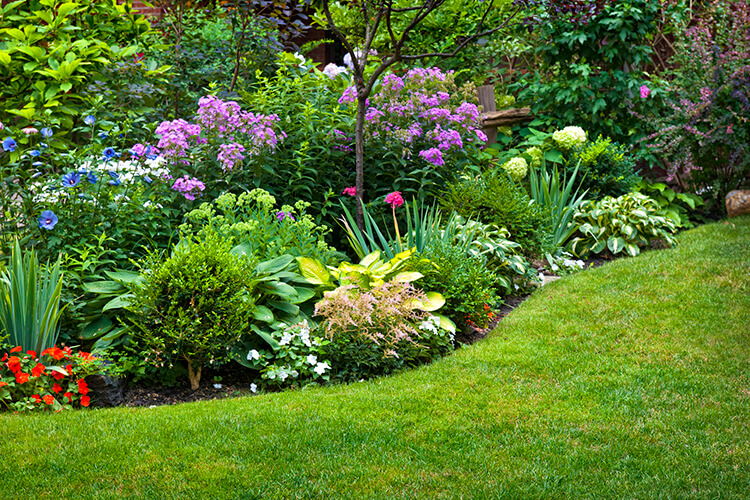
Perennial garden with winter-hardy plants
There’s such a wide range of native and non-native plants, shrubs, and trees to choose from, you’re sure to find some that suit your own personal landscaping style.
If you’re looking for ideas and inspiration, check out some of our previous blog posts, like, Choosing native Ontario Plants for Your Garden, Fall Colour – Extending the Enjoyment of Your Gardens, and Drought-Tolerant Landscaping.
And of course, if you’d just prefer to leave your landscaping to the experts, we’re happy to help. Simply contact us to get the ball rolling!

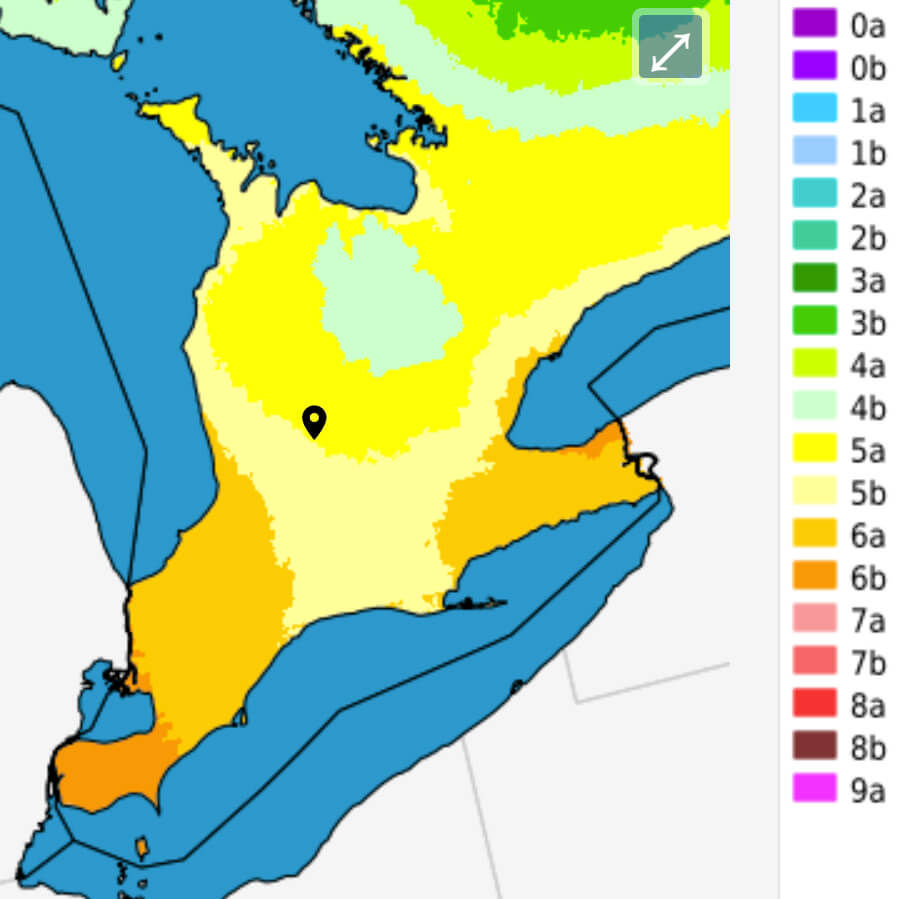
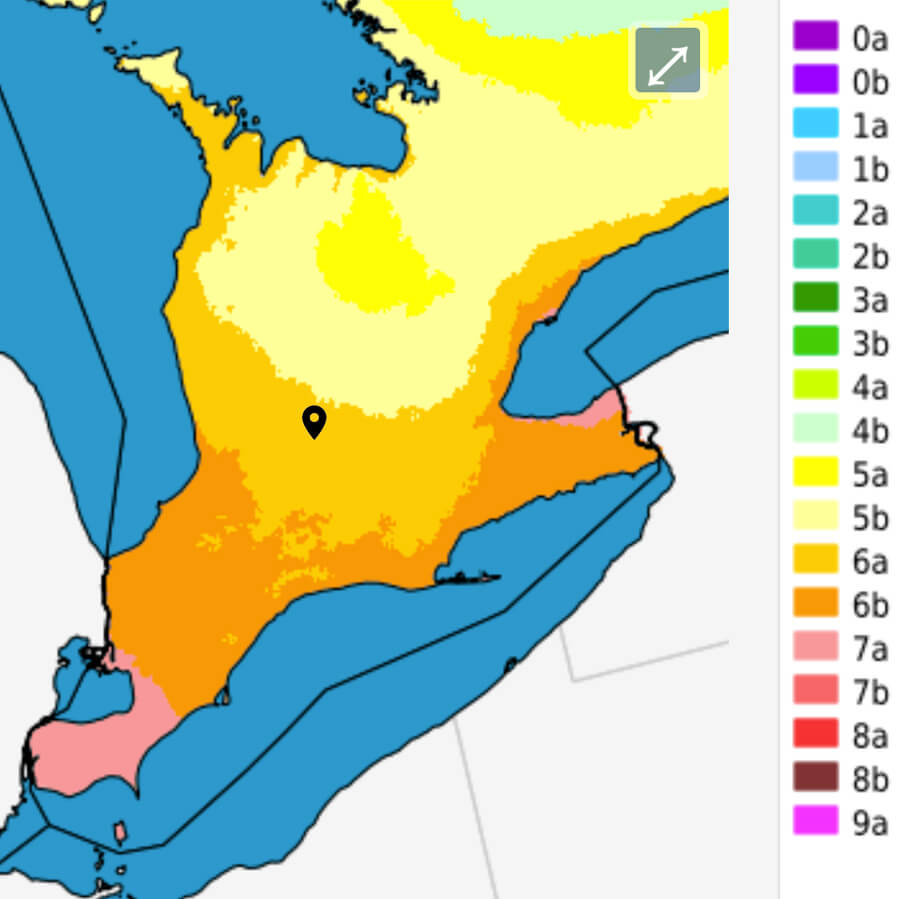
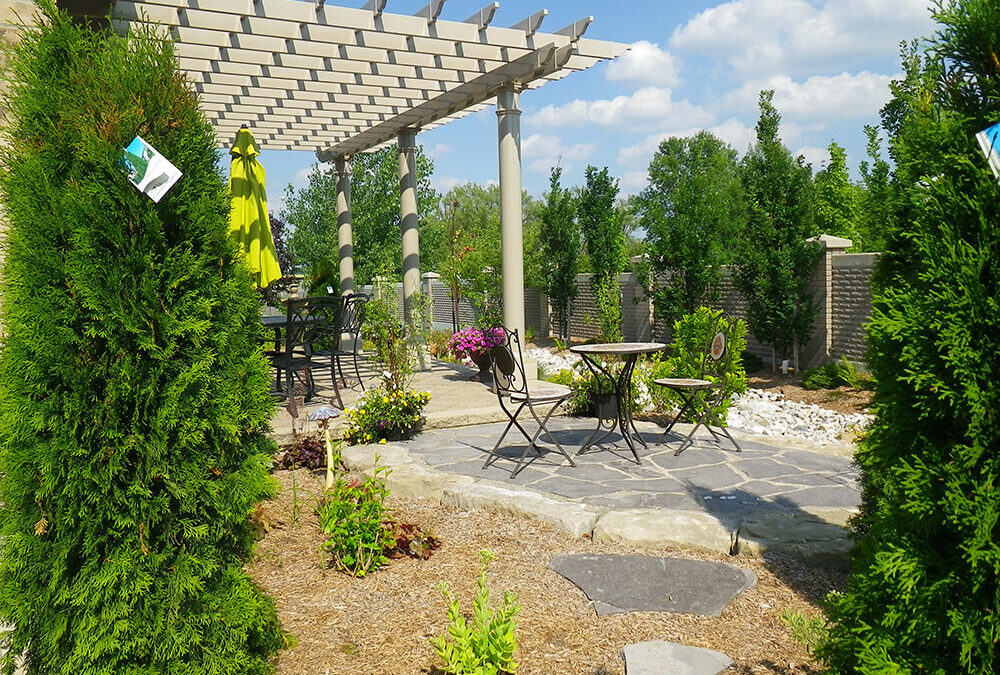
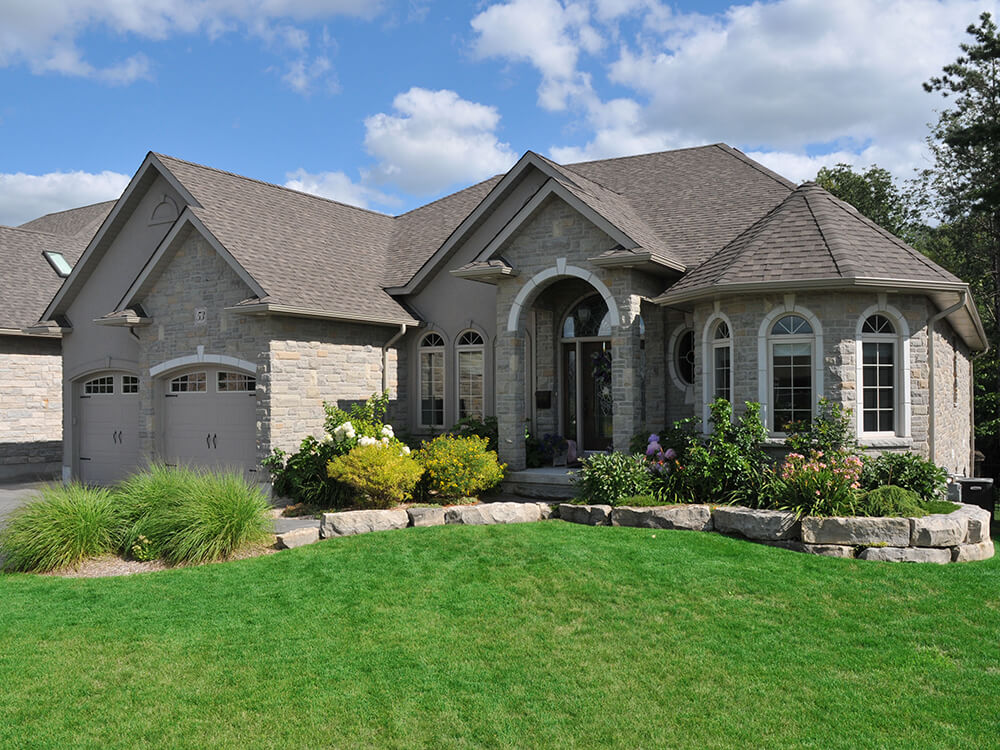 If you search online for ways to increase a home’s value, one method that almost invariably tops the list is to increase your home’s curb appeal. After all, the front of your home provides the first impression for potential buyers, whether they’re passing by or viewing your home online.
If you search online for ways to increase a home’s value, one method that almost invariably tops the list is to increase your home’s curb appeal. After all, the front of your home provides the first impression for potential buyers, whether they’re passing by or viewing your home online.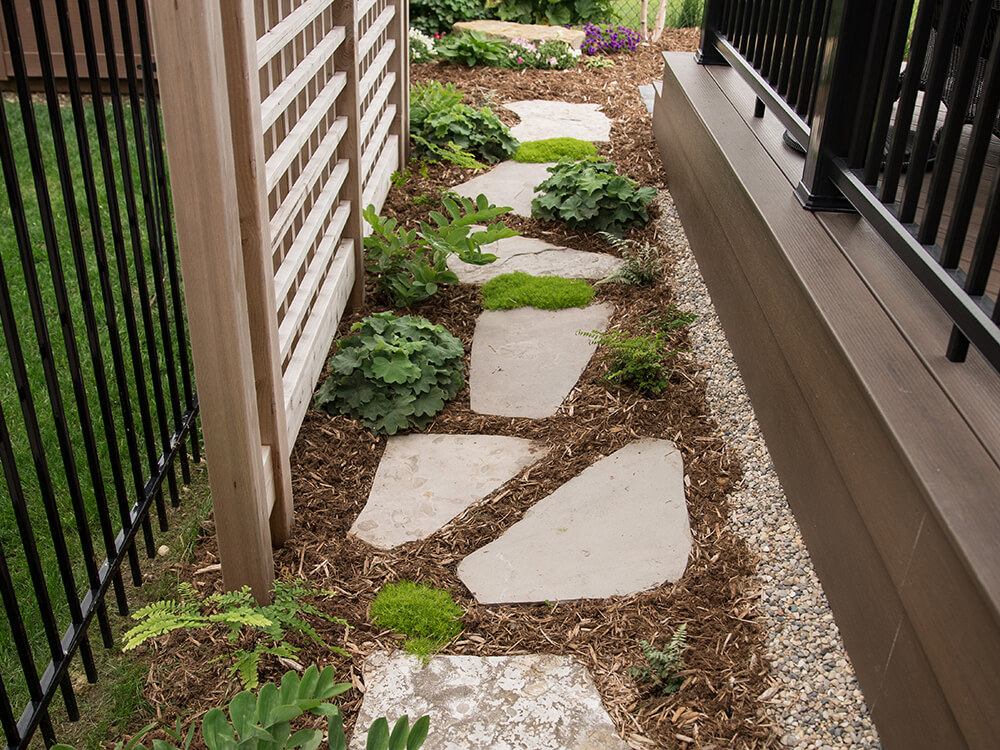 If you’re looking to upgrade your home’s exterior – front, sides, or back – consider updates that will enhance livability, functionality, and practicality. Not only will this maximize your enjoyment, but when it comes time to sell, potential buyers will be able to see themselves relaxing in, rather than working on, the yard and gardens.
If you’re looking to upgrade your home’s exterior – front, sides, or back – consider updates that will enhance livability, functionality, and practicality. Not only will this maximize your enjoyment, but when it comes time to sell, potential buyers will be able to see themselves relaxing in, rather than working on, the yard and gardens.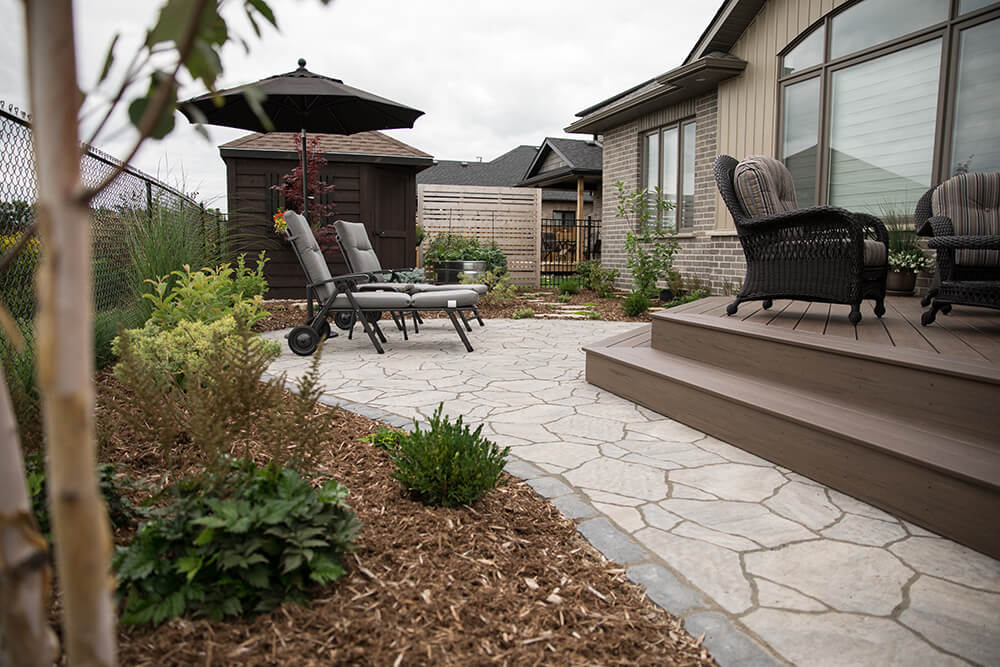 Walkways, patios, and retaining walls are gratifying additions to a home’s exterior. In keeping with the theme of minimal maintenance, though – a focus of almost every one of our customers – we recommend being mindful of the materials you use.
Walkways, patios, and retaining walls are gratifying additions to a home’s exterior. In keeping with the theme of minimal maintenance, though – a focus of almost every one of our customers – we recommend being mindful of the materials you use.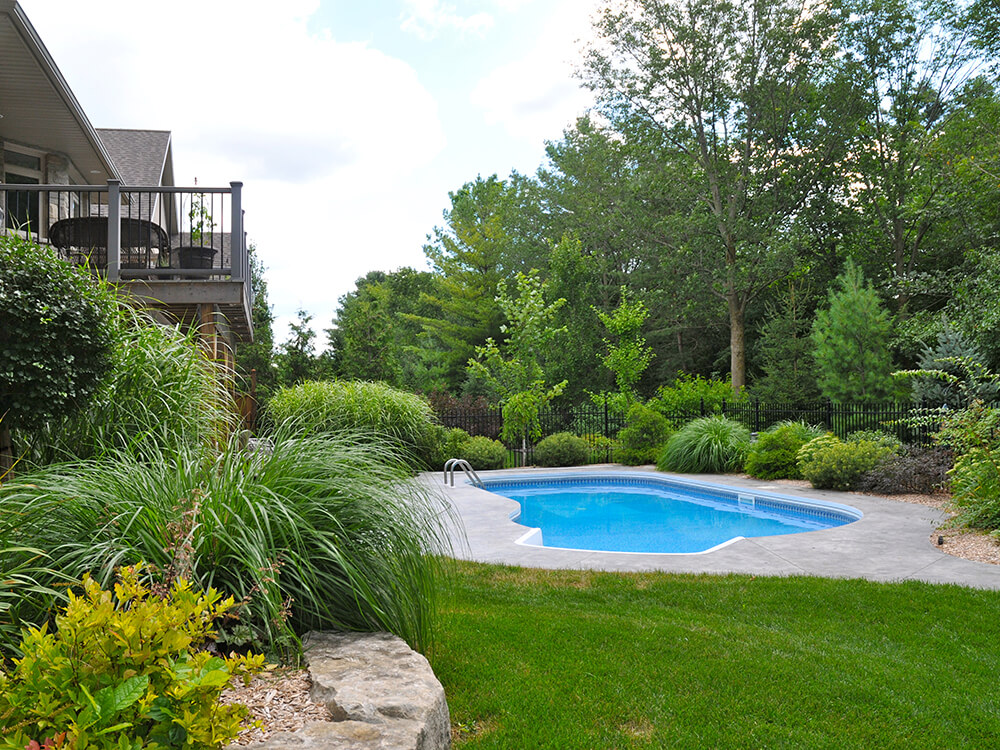 Plants, trees, and shrubs can be used to camouflage imperfections, add privacy, and enhance the existing beauty around your home’s exterior and yard. For example, an exposed foundation can make a home appear old and unkempt. But, planting a balanced selection of plants and shrubs appropriate for the location’s sun exposure can add depth and colour, providing a welcome distraction from your foundation’s drab, grey expanse.
Plants, trees, and shrubs can be used to camouflage imperfections, add privacy, and enhance the existing beauty around your home’s exterior and yard. For example, an exposed foundation can make a home appear old and unkempt. But, planting a balanced selection of plants and shrubs appropriate for the location’s sun exposure can add depth and colour, providing a welcome distraction from your foundation’s drab, grey expanse.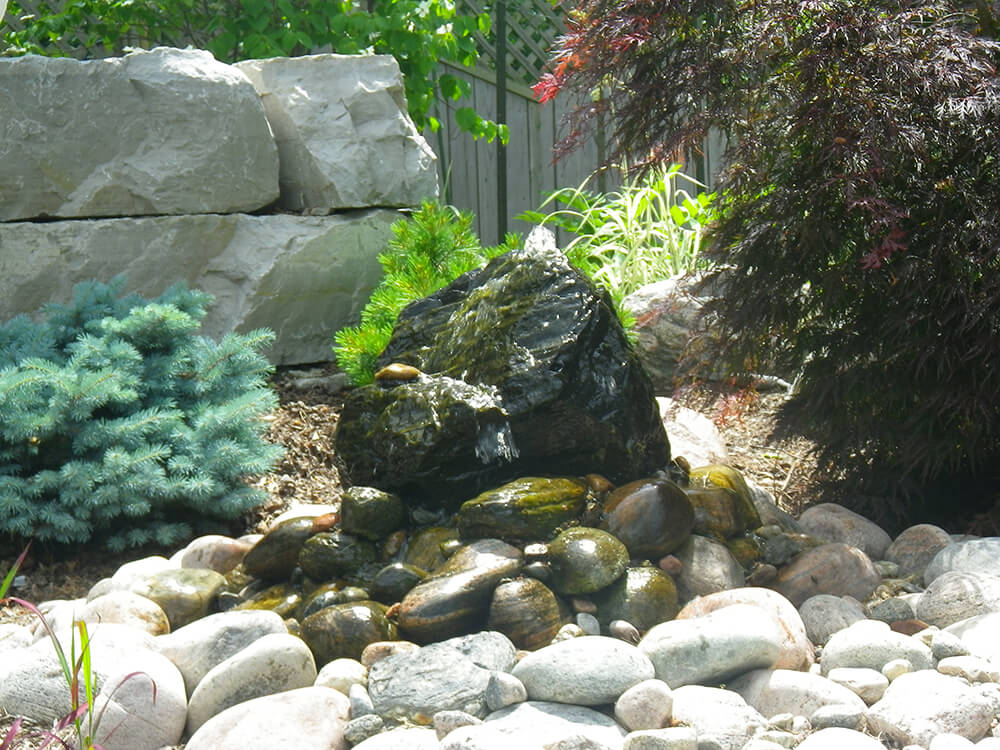 Add unique atmosphere to your outdoor living areas, walkways, and/or front entrance with lighting and water. Ponds, streams, waterfalls, fountains, and bubbling rocks add an audio-visual element that has a universally relaxing effect. And including lighting along walkways, trees, water features, pools, and patios enhances outdoor safety and enjoyment after the sun goes down.
Add unique atmosphere to your outdoor living areas, walkways, and/or front entrance with lighting and water. Ponds, streams, waterfalls, fountains, and bubbling rocks add an audio-visual element that has a universally relaxing effect. And including lighting along walkways, trees, water features, pools, and patios enhances outdoor safety and enjoyment after the sun goes down.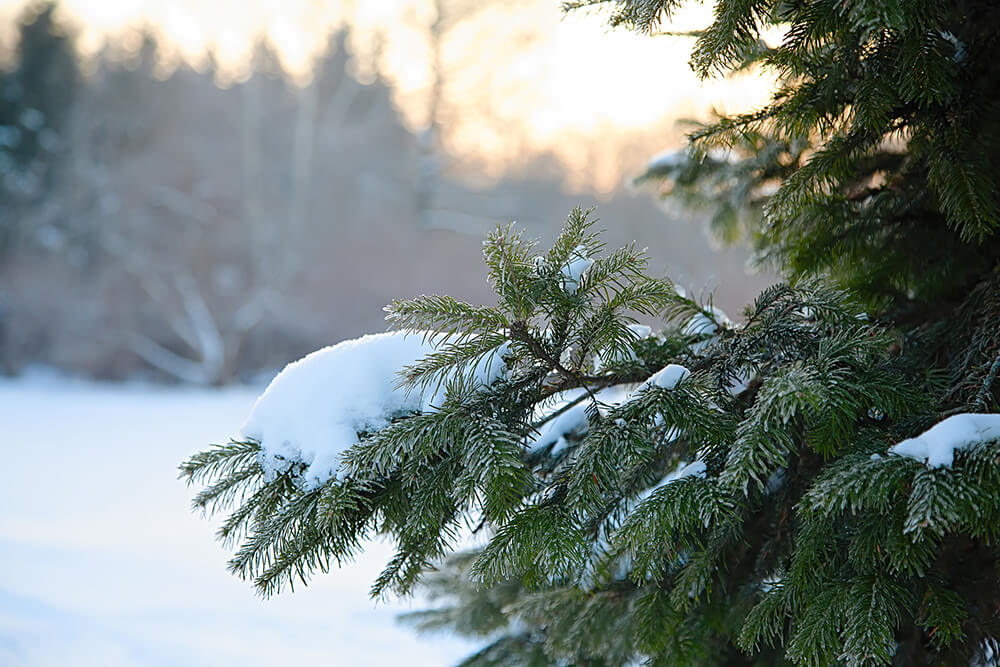
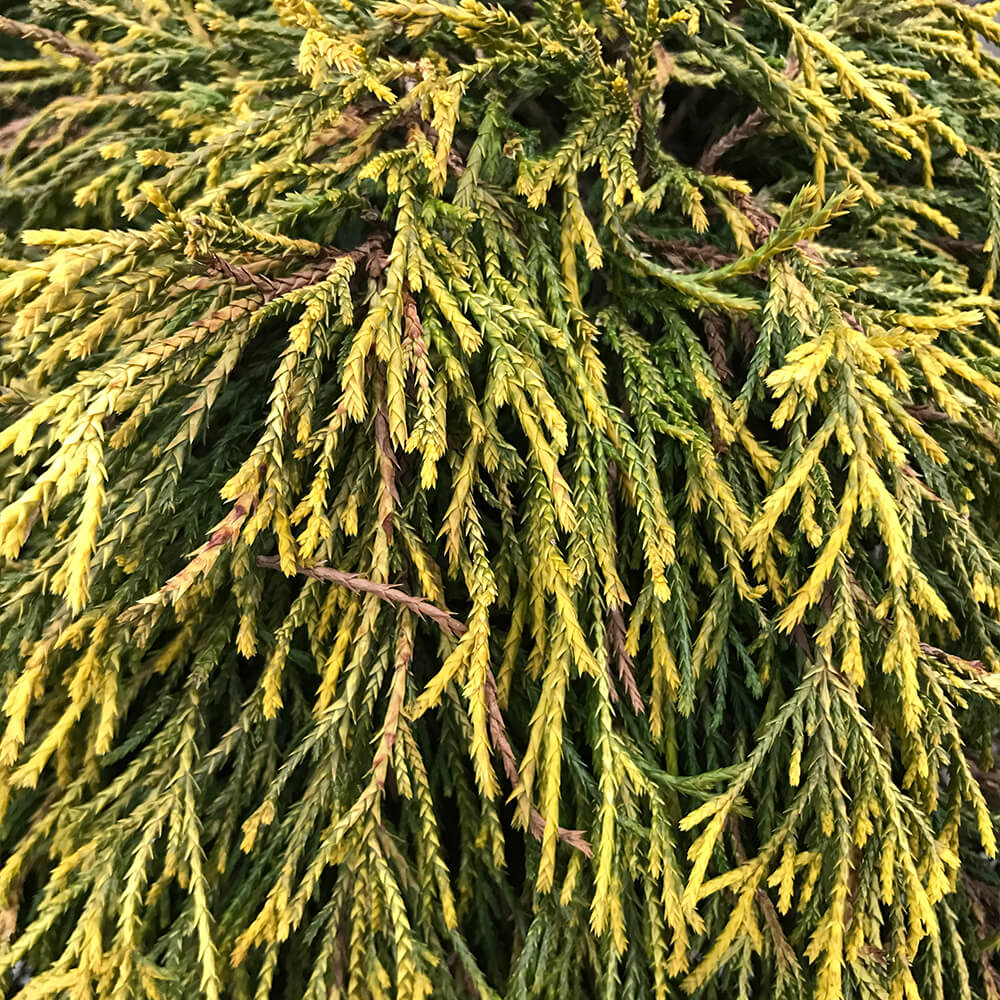
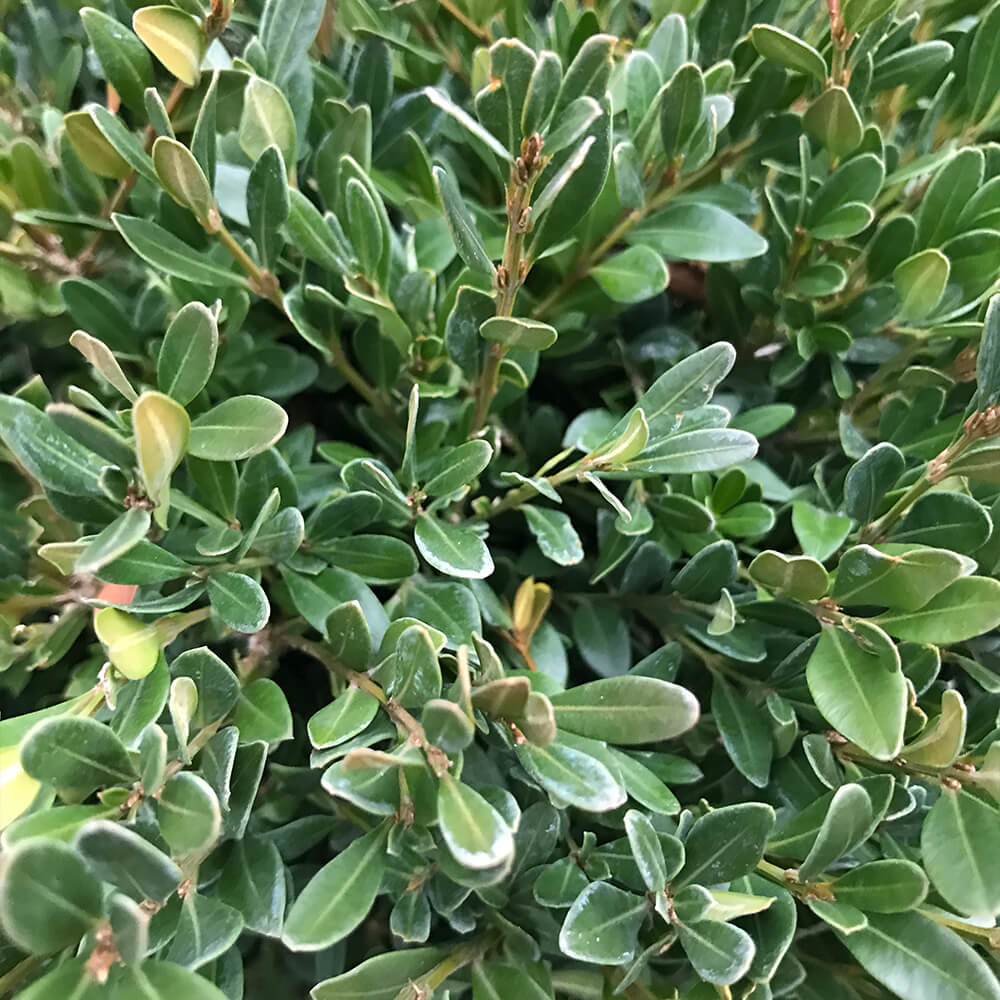
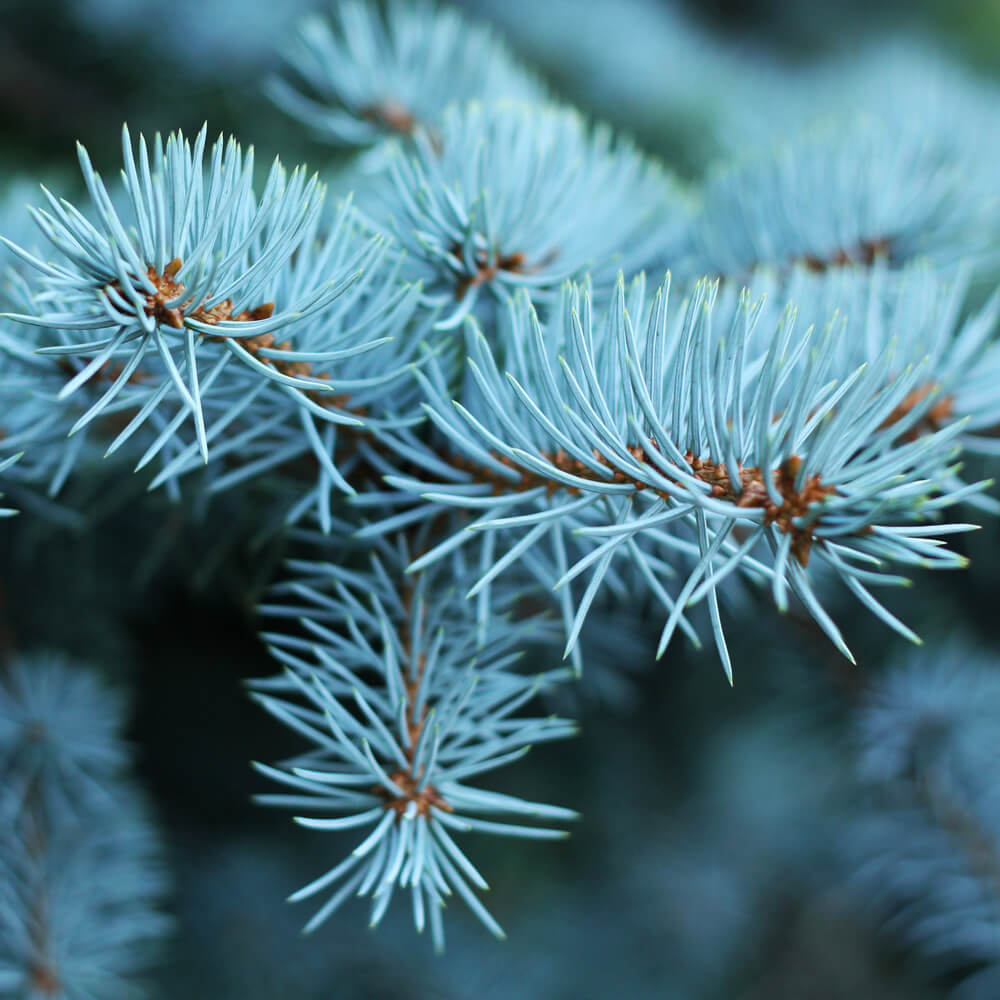
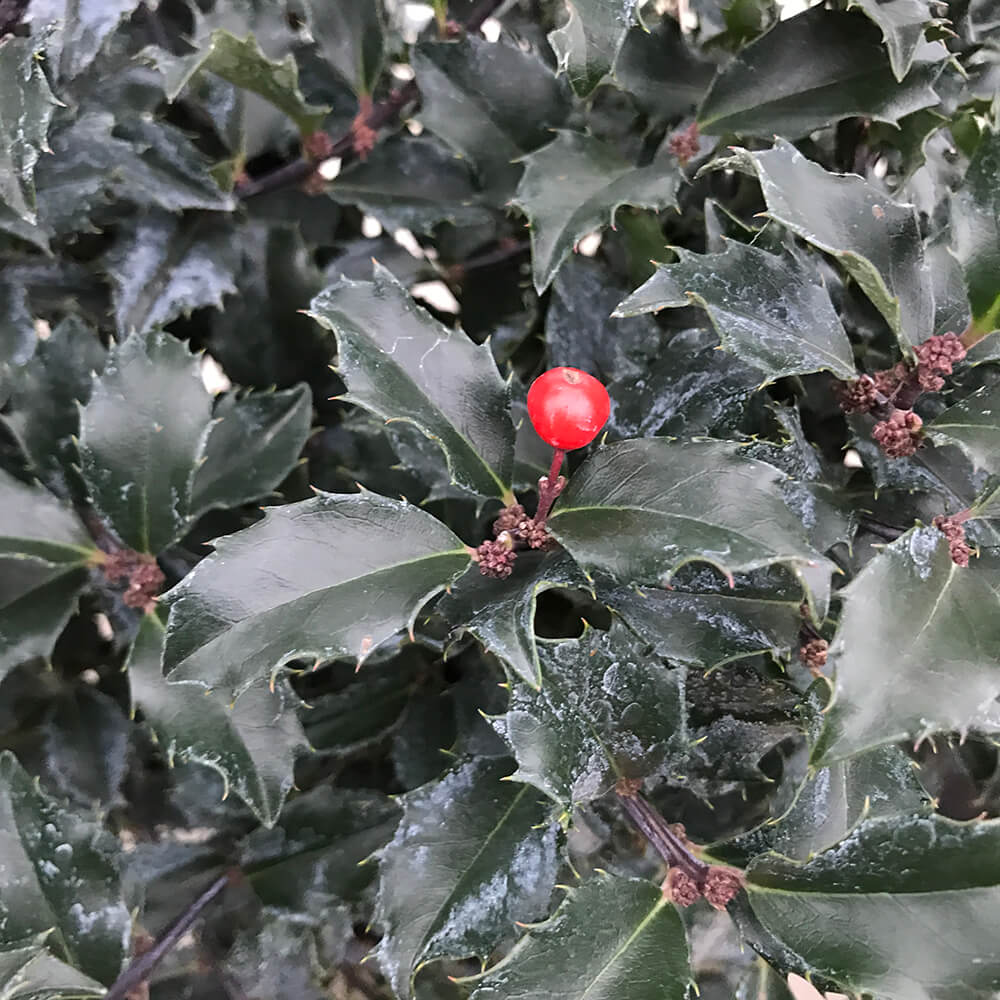
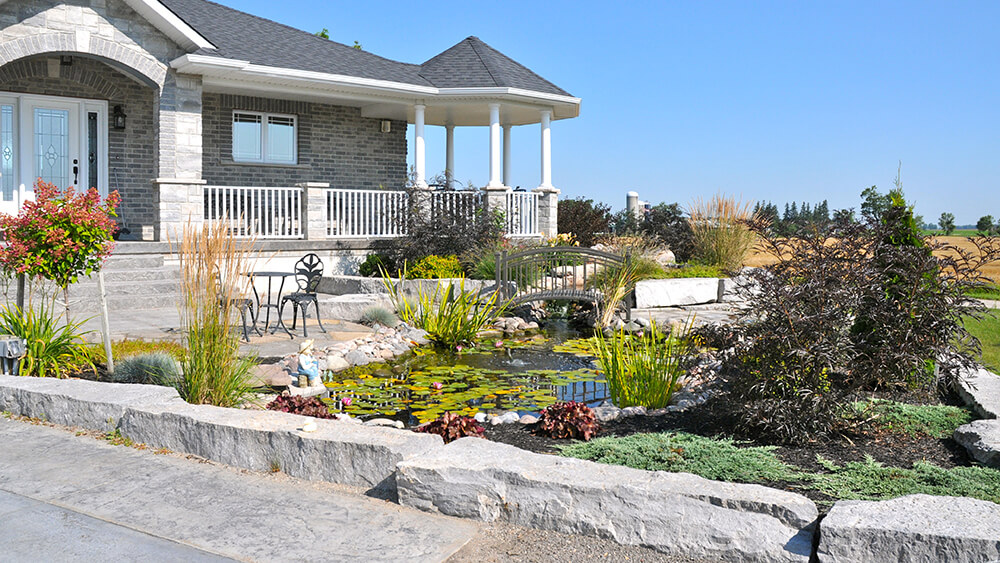
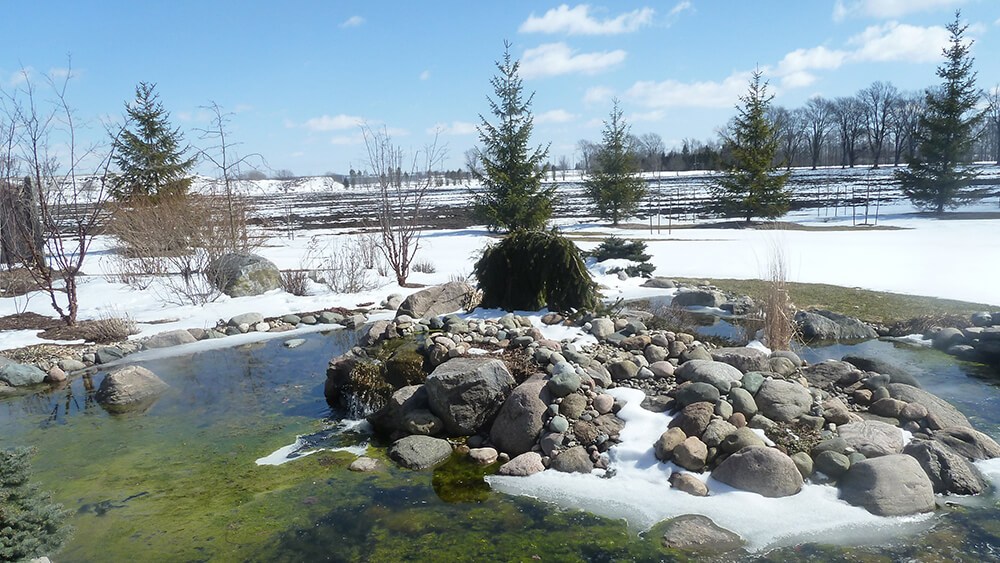
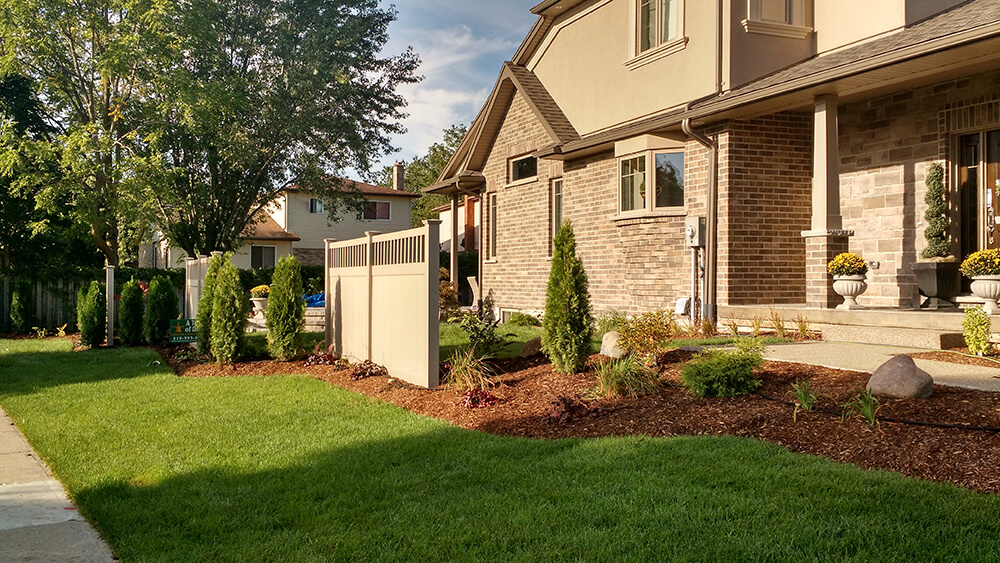
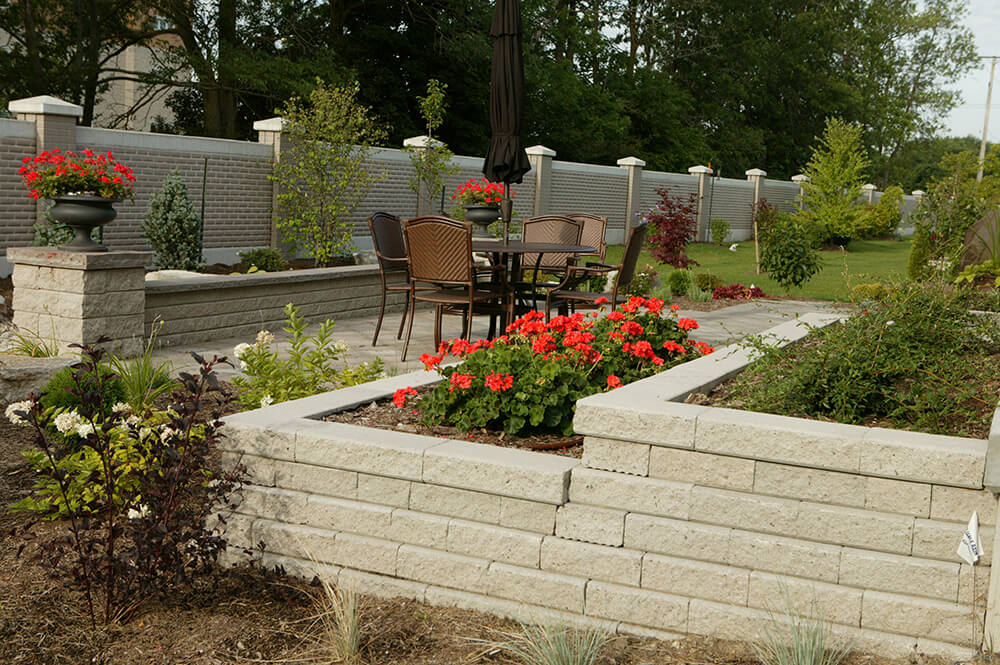
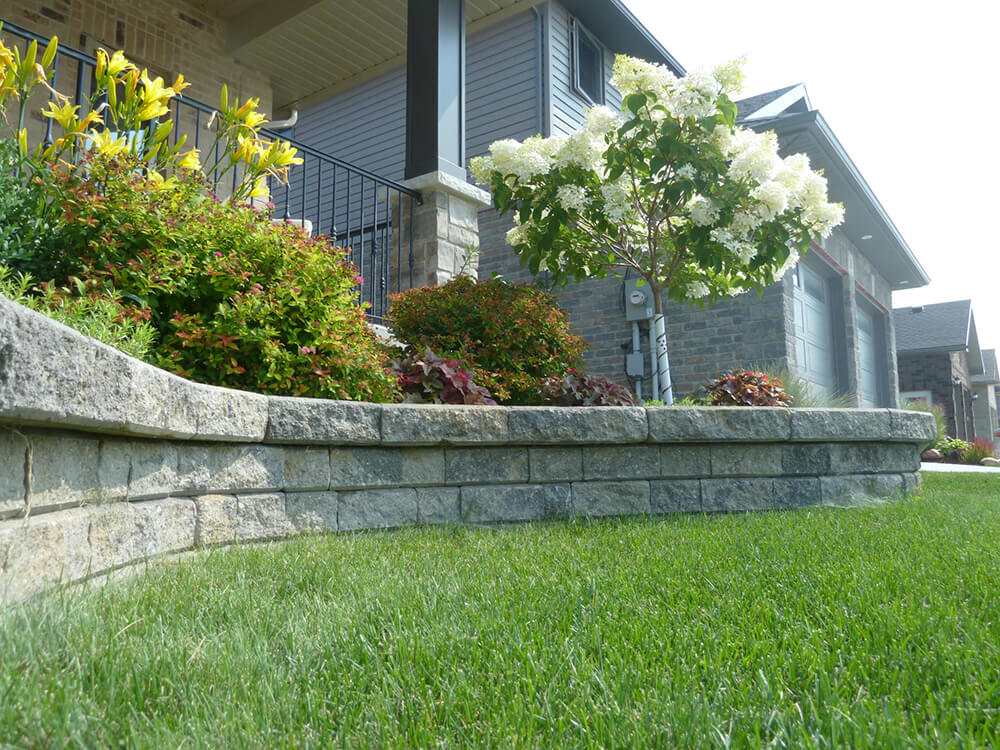 Even though it may look nice at the beginning, a wood retaining wall will begin to weather after a season or two, detracting from its appearance and effectiveness. The structure will need to be treated regularly. And even with treatment, the material may need to be replaced in as little as five years. Plus, the chemicals from pressure-treated lumber leach into the soil, which is not good in general, but especially for vegetable and herb gardens.
Even though it may look nice at the beginning, a wood retaining wall will begin to weather after a season or two, detracting from its appearance and effectiveness. The structure will need to be treated regularly. And even with treatment, the material may need to be replaced in as little as five years. Plus, the chemicals from pressure-treated lumber leach into the soil, which is not good in general, but especially for vegetable and herb gardens.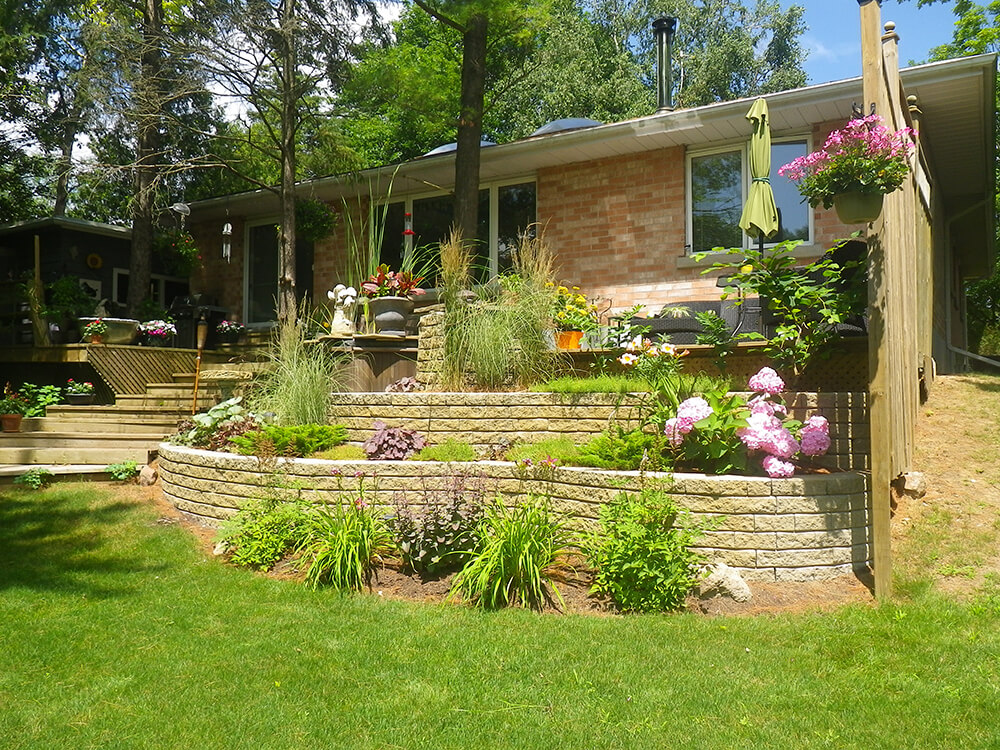 If the slope of the lot in question renders the yard otherwise tough to landscape, one or a tiered series of retaining wall(s) can help create stepped gardens that are much more amenable to hosting plants, shrubs, and trees. Or a retaining wall can convert a sloping lawn into one single level for enhanced enjoyment of your greenspace.
If the slope of the lot in question renders the yard otherwise tough to landscape, one or a tiered series of retaining wall(s) can help create stepped gardens that are much more amenable to hosting plants, shrubs, and trees. Or a retaining wall can convert a sloping lawn into one single level for enhanced enjoyment of your greenspace.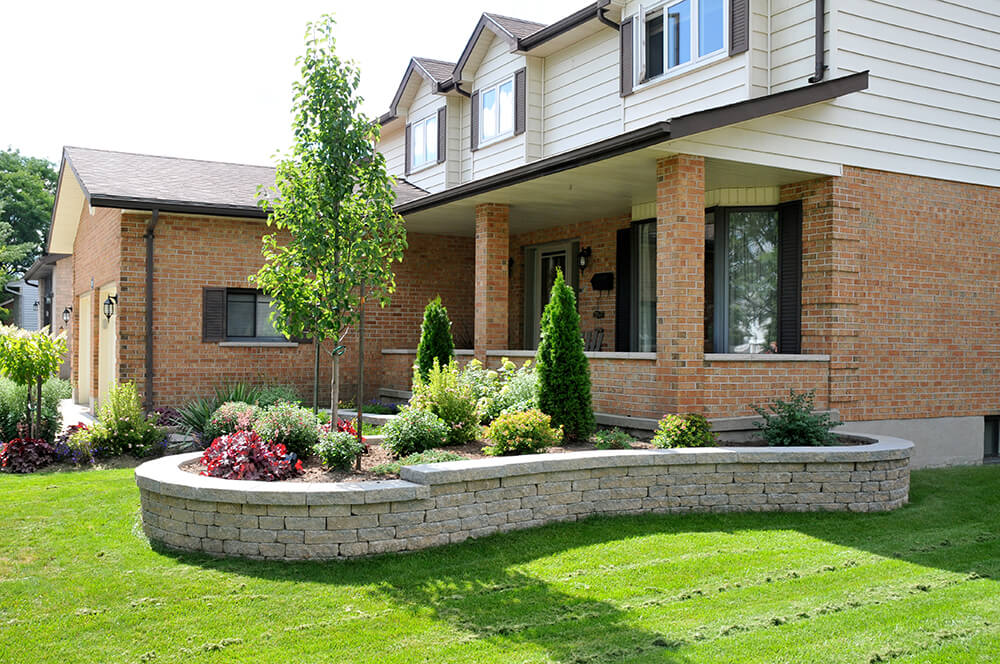 Foundation
Foundation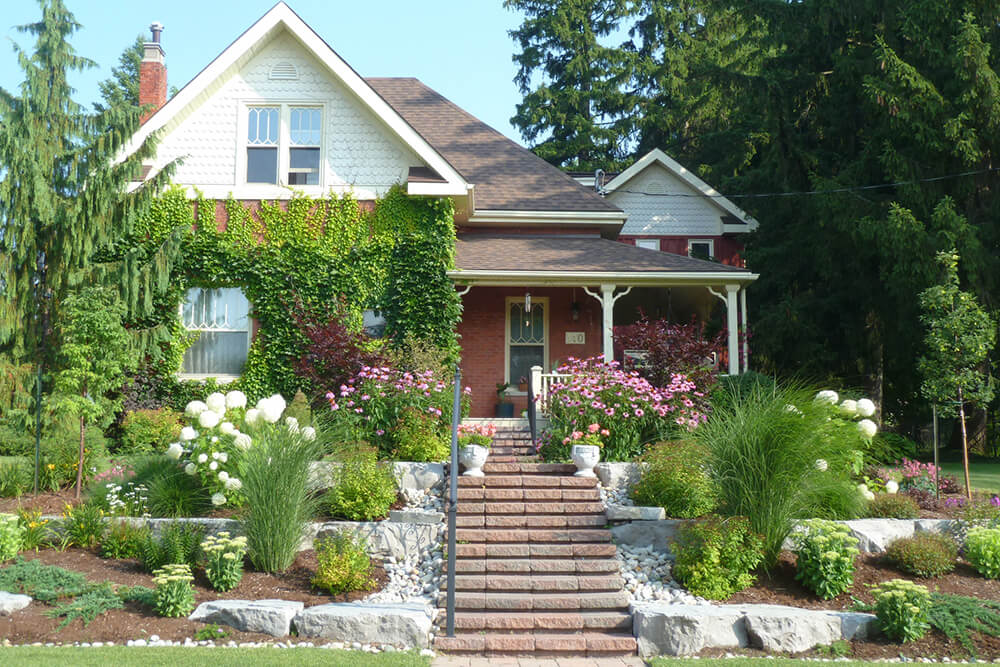
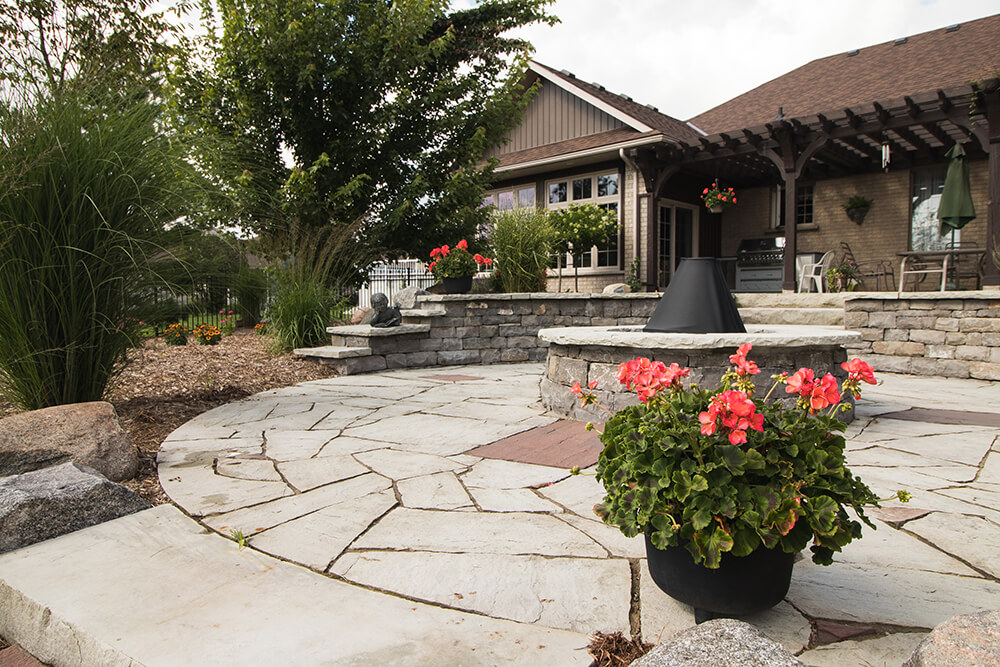
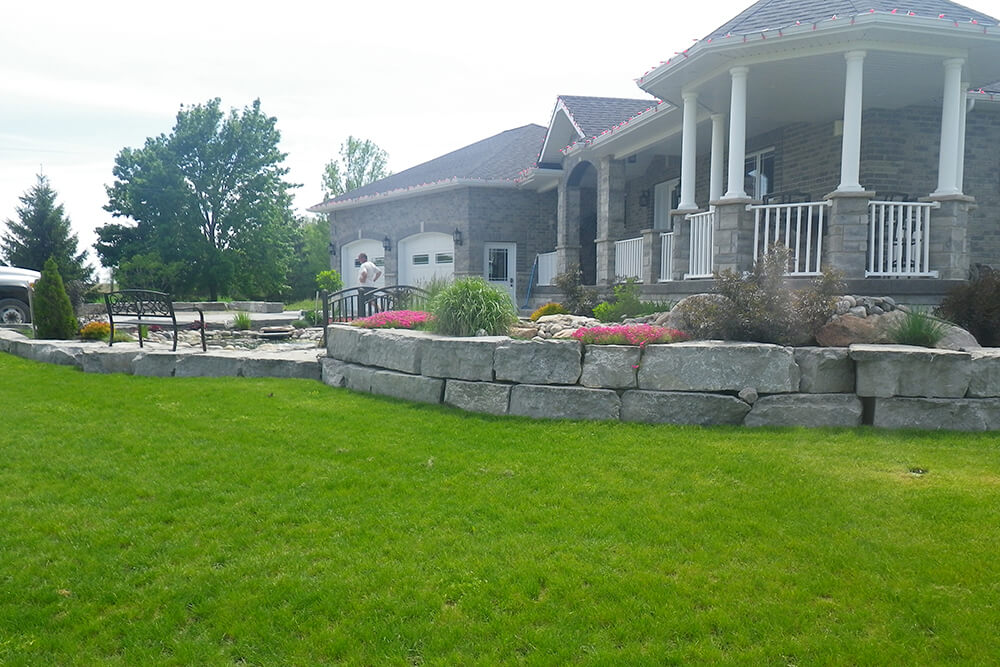
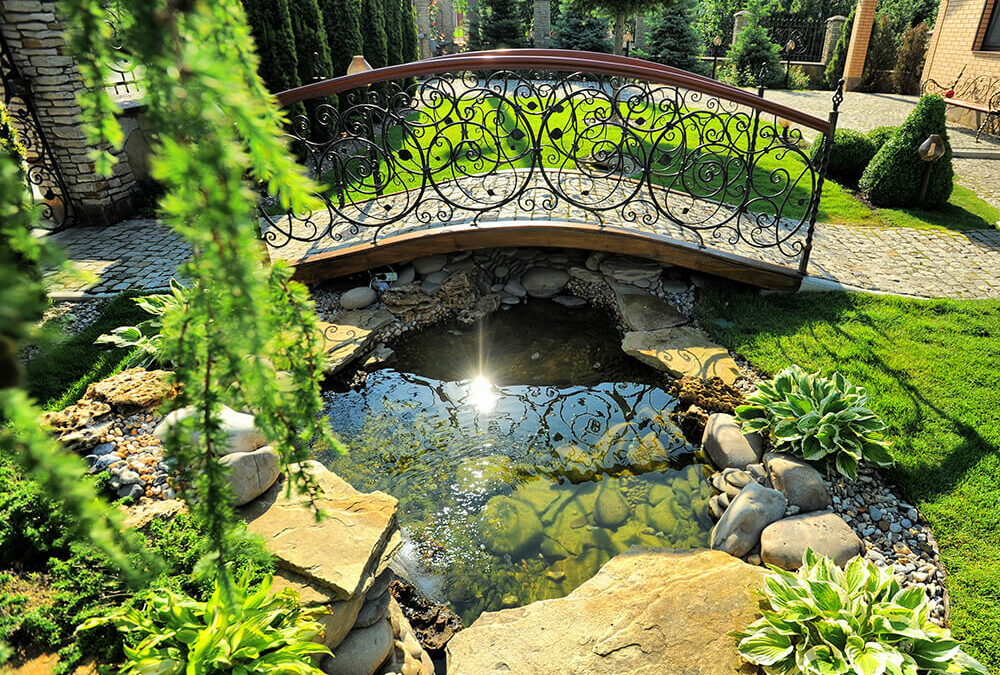
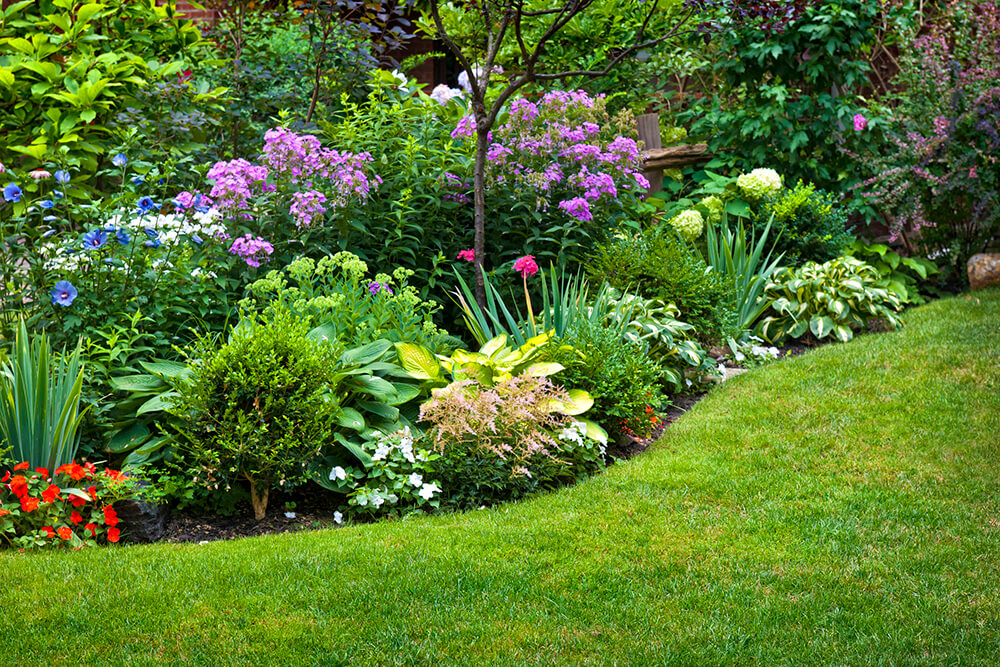
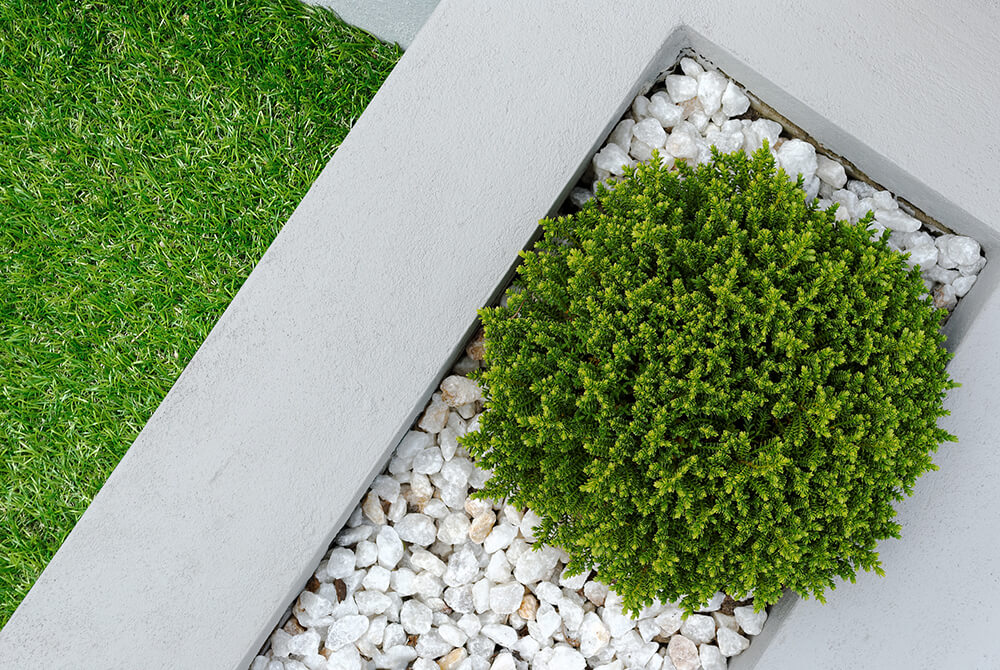
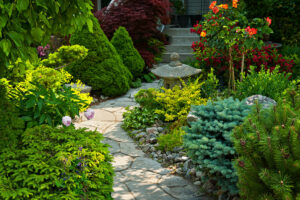
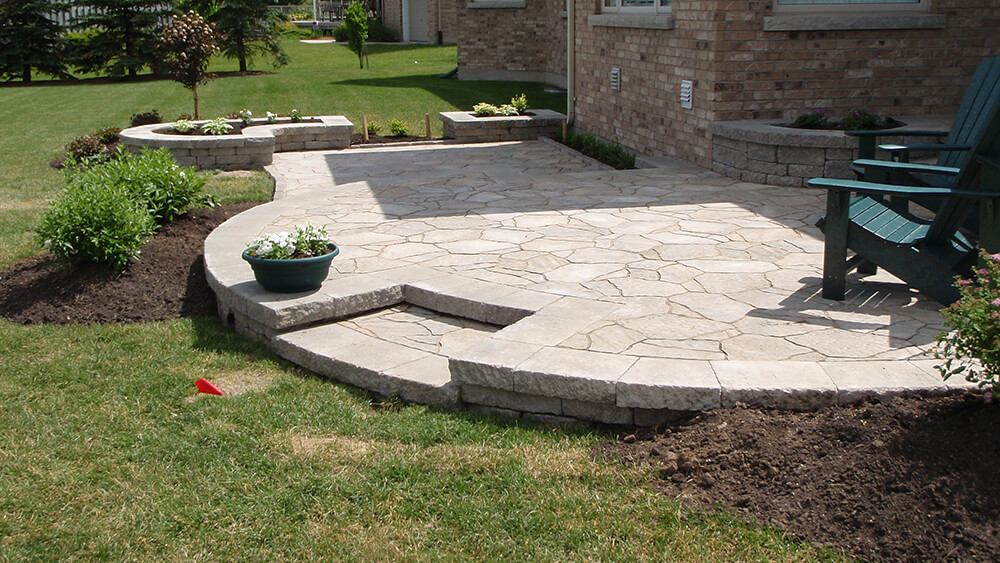
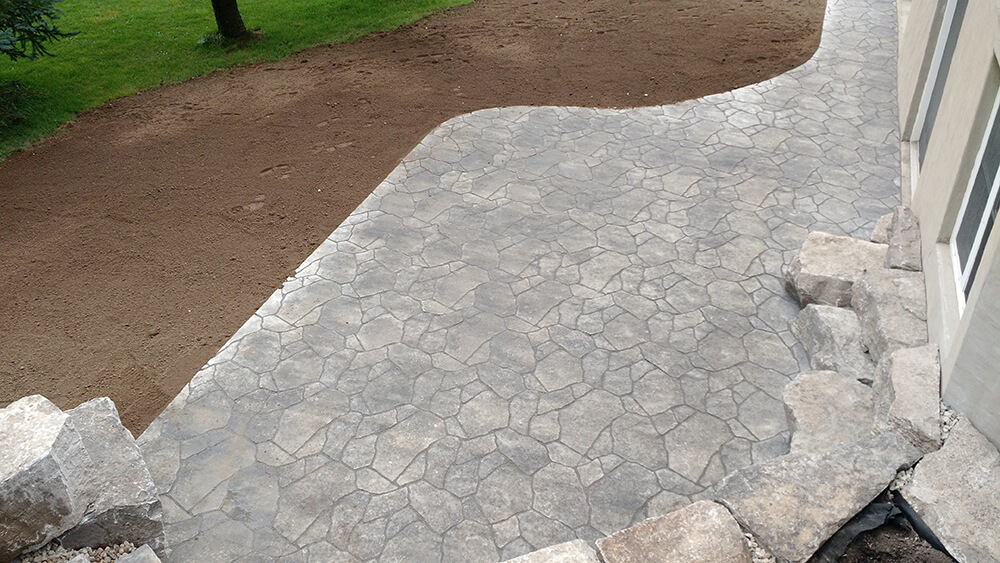 COST
COST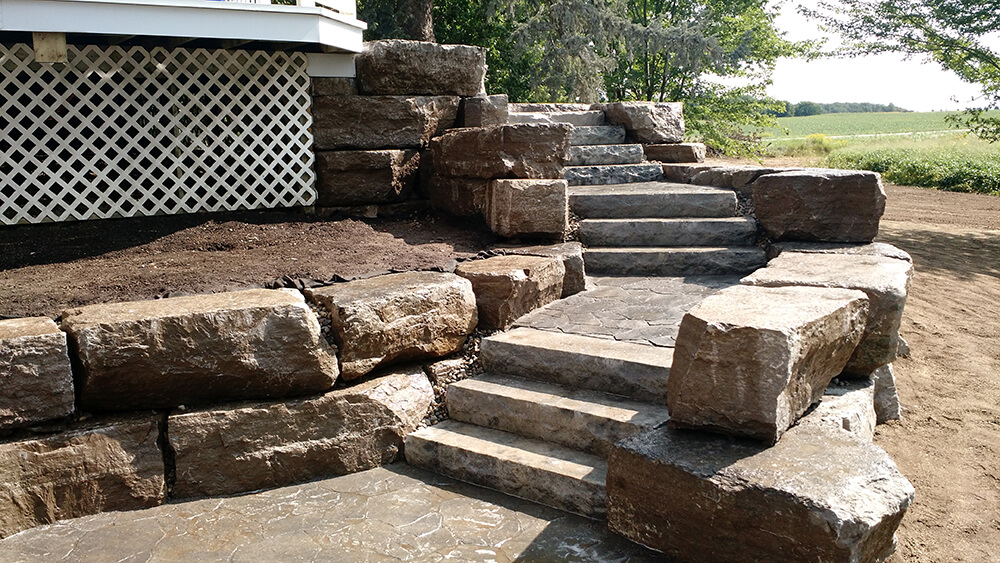 DURABILITY
DURABILITY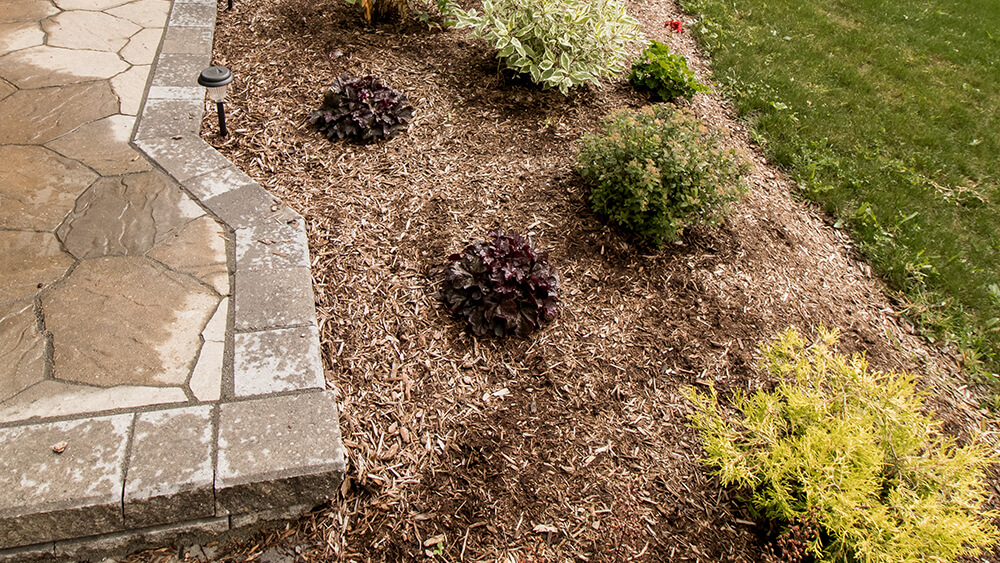 PRACTICALITY
PRACTICALITY